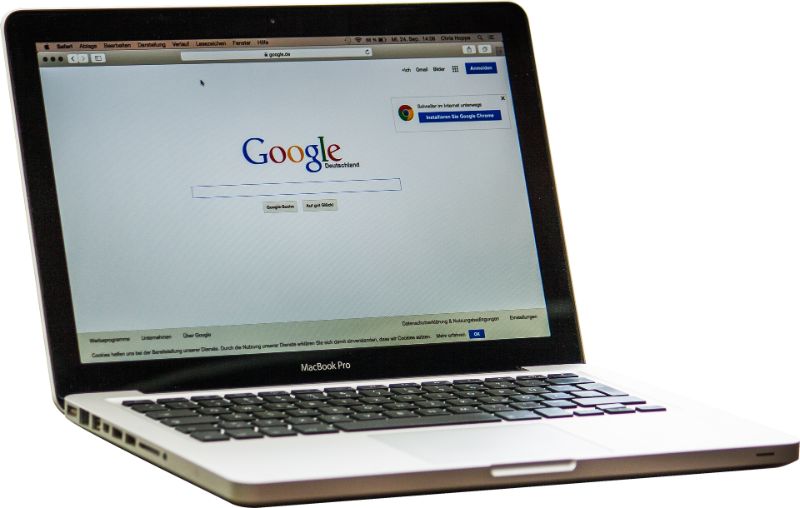
The first thing to understand is that there are two main types of internet connections for laptops: wired connections and wireless connections. Each type of connection has its own advantages and disadvantages, so it is important to understand the different options available.
If you managed already to connect your laptop to the internet, but if it still not working you may check our article on that.
Content of the page
1. Wired Connections
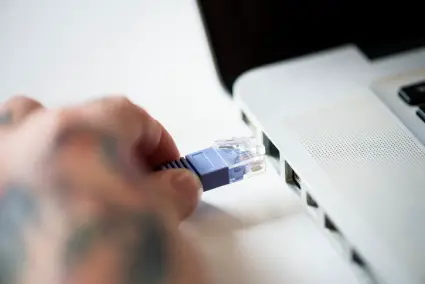
Wired connections are the most reliable and secure way to connect your laptop to the internet. These types of connections are usually faster than wireless connections, and they do not require any additional hardware or software. Wired connections are typically used for gaming, streaming, and other activities that require a lot of bandwidth.
| Type | Description | Usage |
|---|---|---|
| Ethernet Connection | A physical cable connection | High-speed internet access |
| USB Tethering | USB cable connection | Convenient internet access |
| Thunderbolt Connection | Thunderbolt cable connection | High-speed internet access |
1.1 Ethernet Connection
An Ethernet connection is the most common type of wired connection. It is a physical cable that can be plugged directly into your laptop and a compatible router or modem. Ethernet connections are typically used for high-speed internet access.
1.2 USB Tethering
USB tethering is a type of wired connection that uses a USB cable to connect your laptop to a compatible modem or router. It is a convenient way to connect to the internet, as it does not require any additional hardware or software.
1.3 Thunderbolt Connection
Thunderbolt is a type of connection that uses a Thunderbolt cable to connect your laptop to a compatible modem or router. It is faster than Ethernet and USB tethering, and it is typically used for high-speed internet access.
2. Wireless Connections

Wireless connections are the most popular way to connect to the internet, as they are convenient and easy to use. However, they are not as secure as wired connections, and they are typically slower.
| Type | Description | Usage |
|---|---|---|
| Wi-Fi Connection | Wireless radio waves connection | General internet access |
| Mobile Hotspots | Cellular network connection | Fast internet access, no Wi-Fi |
| Bluetooth Connection | Bluetooth technology connection | File and data transfer |
2.1 Wi-Fi Connection
A Wi-Fi connection is the most common type of wireless connection. It uses radio waves to connect your laptop to a compatible modem or router. Wi-Fi connections are typically used for general internet access, such as web browsing and streaming.
2.2 Mobile Hotspots
A mobile hotspot is a type of wireless connection that uses a cellular network to connect your laptop to the internet. These types of connections are usually faster than Wi-Fi, and they can be used in areas where there is no Wi-Fi signal.
2.3 Bluetooth Connection
Bluetooth is a type of wireless connection that uses Bluetooth technology to connect your laptop to other compatible devices, such as smartphones and tablets. This type of connection is typically used for transferring files and data between devices.
Connecting to a Wi-Fi Network
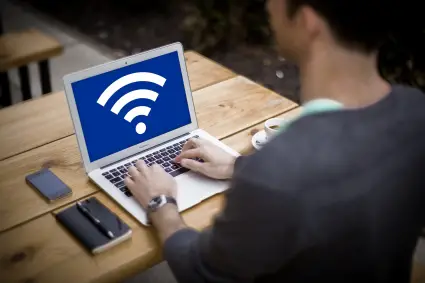
Connecting your laptop to the internet can be done in a number of different ways. Wireless networks, or Wi-Fi, are the most popular way to connect, as they are convenient, fast and secure. In this section, we will explain how to connect to a Wi-Fi network and the best practices to ensure a secure connection.
3. Finding and Connecting to Wi-Fi Networks
Finding and connecting to a Wi-Fi network is easy. Most laptop computers come with a built-in wireless adapter, which enables the laptop to detect and connect to any available Wi-Fi networks. Here’s how to find and connect to a Wi-Fi network:
- Open the Wi-Fi settings on your laptop. On Windows laptops, you can open the Wi-Fi settings by clicking on the Wi-Fi icon in the system tray. On macOS laptops, you can open the Wi-Fi settings by clicking the Wi-Fi icon in the menu bar.
- Select the Wi-Fi network that you want to connect to. If the network is password-protected, enter the password when prompted. Once the password is accepted, your laptop will connect to the Wi-Fi network.
- If the Wi-Fi network is unsecured, your laptop will automatically connect to the network without a password.
- Once your laptop is connected to the Wi-Fi network, you will be able to access the internet.
3.1 Accessing Wi-Fi Networks in Public Places
When you’re out and about, you may come across free Wi-Fi networks in public places such as restaurants, cafes, libraries and airports. These Wi-Fi networks are typically unsecured, meaning you will not need a password to connect. However, it’s important to note that these Wi-Fi networks are not secure, so you should avoid sending any sensitive information, such as personal or financial information, over these networks.
3.2 Connecting to a Home Wi-Fi Network
If you have a home Wi-Fi network, connecting to it is easy. All you need to do is open the Wi-Fi settings on your laptop, select the home Wi-Fi network and enter the password (if applicable). Once the password is accepted, your laptop will connect to the home Wi-Fi network.
3.3 Troubleshooting Wi-Fi Connection Issues
| Issue | Possible Solution |
|---|---|
| Out of range | Move closer to the Wi-Fi network |
| Network is disabled or turned off | Check if the network is active |
| Password-protected network | Enter the correct password |
| Wi-Fi adapter disabled | Enable the Wi-Fi adapter |
| Outdated Wi-Fi drivers | Update Wi-Fi drivers |
If you’re having trouble connecting to a Wi-Fi network, there are a few things you can try:
- Make sure the Wi-Fi network is in range of your laptop. If you’re too far away, your laptop won’t be able to detect the Wi-Fi network.
- Make sure the Wi-Fi network is active. Some Wi-Fi networks are disabled or turned off, which means you won’t be able to connect to them.
- Make sure the Wi-Fi network is not password-protected. If it is, you’ll need to enter the password to connect.
- Make sure the Wi-Fi adapter on your laptop is enabled. On Windows laptops, you can enable the Wi-Fi adapter by clicking the Wi-Fi icon in the system tray.
- Make sure the Wi-Fi drivers on your laptop are up to date. You can update your Wi-Fi drivers by visiting the manufacturer’s website and downloading the latest drivers.
4. Wi-Fi Security and Best Practices
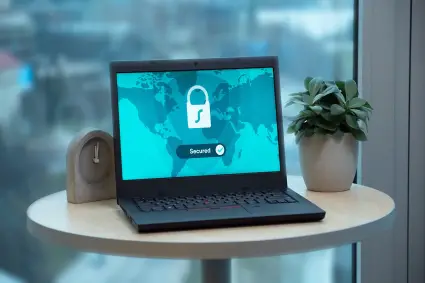
| Best Practice | Description |
|---|---|
| Setting Up a Strong Wi-Fi Password | Use a strong, complex password |
| Enabling Network Encryption | Enable encryption for added security |
| Updating Wi-Fi Drivers | Regularly update Wi-Fi drivers for bug fixes and security updates |
It’s important to ensure that your laptop is secure when connecting to a Wi-Fi network. Here are some best practices to help keep your laptop secure:
4.1 Setting Up a Strong Wi-Fi Password
If you’re setting up a home Wi-Fi network, it’s important to set up a strong password. A strong password should be at least 8 characters long and should contain a combination of uppercase and lowercase letters, numbers and special characters. Avoid using simple words or phrases, as these can easily be guessed.
4.2 Enabling Network Encryption
Network encryption is a key security measure that should be enabled on all home Wi-Fi networks. Network encryption scrambles the data that is sent over the Wi-Fi network, making it unreadable to anyone who is not authorized to access the network. Most routers support network encryption, so make sure it is enabled on your home Wi-Fi network.
4.3 Updating Wi-Fi Drivers
It’s important to keep your Wi-Fi drivers up to date. Wi-Fi drivers are updated regularly and provide bug fixes and security updates, so make sure you check your laptop manufacturer’s website regularly for the latest drivers.
Setting Up a Wired Internet Connection
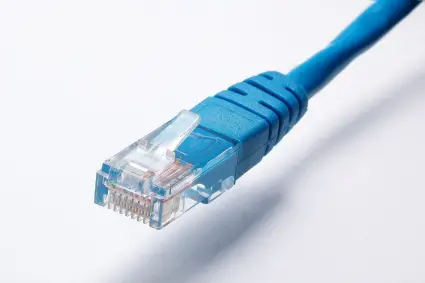
Using a wired connection to connect your laptop to the internet is one of the fastest and most reliable options available. By connecting directly to your modem or router with an Ethernet cable, you can enjoy a faster and more stable connection than with a wireless connection. Here’s how to set up a wired internet connection on your laptop.
5. Connecting via Ethernet
To connect your laptop to the internet using an Ethernet connection, you’ll need an Ethernet cable and a modem or router with an Ethernet port. If you don’t have a modem or router, you can purchase one from your internet service provider (ISP).
5.1 Using an Ethernet Cable
Once you have an Ethernet cable and modem or router, you can begin the setup process. First, plug one end of the Ethernet cable into the Ethernet port on your modem or router. Then, plug the other end into the Ethernet port on your laptop. Once the cable is securely connected, your laptop should automatically detect and connect to your network.
5.2 Configuring Ethernet Settings
If your laptop is not automatically connecting to your network, you may need to manually configure your network settings. To do this, open the Settings app on your laptop, then select “Network & Internet.” Next, click on “Ethernet” and select the “Change adapter options” link. From here, you can select your network and enter the required information, such as your username and password.
6. USB Tethering for Internet Connectivity
If you don’t have access to a modem or router, or if you’re on the go and don’t have an Ethernet cable, you can still connect your laptop to the internet with USB tethering. This process allows you to connect your laptop to a smartphone or other device with an internet connection.
6.1 Connecting Your Laptop to a Smartphone
To get started, you’ll need a smartphone with an internet connection and a USB cable. First, connect your smartphone to your laptop with the USB cable. Next, open the Settings app on your laptop, then select “Network & Internet.” Under “Network & Internet,” select “Mobile hotspot.” From here, you can select your smartphone and enter the required information, such as your username and password.
6.2 Configuring USB Tethering Settings
If you’re having trouble connecting your laptop to your smartphone, you may need to manually configure the settings. To do this, open the Settings app on your laptop, then select “Network & Internet.” Next, click on “Mobile hotspot” and select the “Change adapter options” link. From here, you can select your smartphone and enter the required information, such as your username and password.
Utilizing Mobile Hotspots for Internet Access

Using a mobile hotspot is another great way to connect your laptop to the internet when you’re on the go. Mobile hotspots are portable devices that allow you to connect your laptop to the internet without relying on a home or office connection. Here’s how to set up a mobile hotspot on your laptop.
7. Tethering Your Laptop to a Mobile Hotspot
To connect your laptop to a mobile hotspot, you’ll need a mobile hotspot device and a USB cable. First, connect your mobile hotspot device to your laptop with the USB cable. Next, open the Settings app on your laptop, then select “Network & Internet.” Under “Network & Internet,” select “Mobile hotspot.” From here, you can select your mobile hotspot and enter the required information, such as your username and password.
7.1 Setting Up a Mobile Hotspot on Your Smartphone
If you don’t have a mobile hotspot device, you can still connect your laptop to the internet using your smartphone. To do this, you’ll need a smartphone with an internet connection and a USB cable. First, connect your smartphone to your laptop with the USB cable. Next, open the Settings app on your laptop, then select “Network & Internet.” Under “Network & Internet,” select “Mobile hotspot.” From here, you can select your smartphone and enter the required information, such as your username and password.
7.2 Connecting Your Laptop to the Mobile Hotspot
Once you’ve set up your mobile hotspot, you can connect your laptop to the internet. First, make sure your mobile hotspot is turned on. Then, open the Settings app on your laptop, then select “Network & Internet.” Under “Network & Internet,” select “Mobile hotspot.” From here, you can select your mobile hotspot and enter the required information, such as your username and password.
Additional Methods for Internet Connection
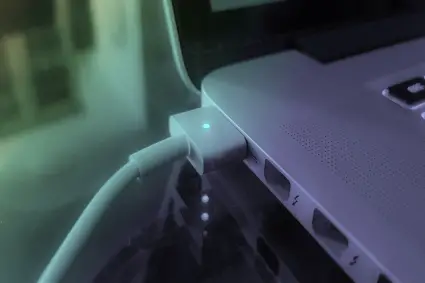
8. Using a Thunderbolt Connection
Thunderbolt is a high-speed connection technology used for data transfer and display support. It was developed by Intel and Apple and is now used by many other manufacturers. Thunderbolt connections can be used to connect your laptop to the internet.
8.1 Understanding Thunderbolt Technology
Thunderbolt is a combination of both PCI Express and DisplayPort technology. It uses a small connector which allows you to connect multiple devices to your laptop. This includes external storage devices, high-definition displays and other peripherals. Thunderbolt technology also allows for data transfer speeds up to 20Gbps – much faster than a regular USB connection.
8.2 Connecting Your Laptop via Thunderbolt
To use a Thunderbolt connection to connect to the internet, you will need to have an Ethernet adapter that is compatible with Thunderbolt. These are available from most computer stores and online retailers. Once you have the adapter, you can simply plug it into the Thunderbolt port on your laptop and connect it to your router or modem using an Ethernet cable.
9. Establishing a Bluetooth Connection
Bluetooth is another method you can use to connect your laptop to the internet. This option is most useful if you have a laptop with built-in Bluetooth capabilities.
9.1 Pairing Your Laptop with a Bluetooth Device
The first step in using Bluetooth to connect to the internet is to pair your laptop with a Bluetooth device. This could be a smartphone, tablet, laptop or any other device that has Bluetooth capabilities. To do this, you will need to turn on the Bluetooth on both devices. On your laptop, you can typically do this by going to the settings menu and turning on the Bluetooth. Once both devices have Bluetooth turned on, they should be able to detect each other.
9.2 Enabling Internet Sharing via Bluetooth
Once the two devices have been paired, you can then enable internet sharing via Bluetooth. To do this, you will need to go to the settings menu on your laptop and enable the option for “Internet Sharing”. From here, you can select the Bluetooth device that you would like to share the internet connection with. Once this is done, your laptop should now have an internet connection.
Conclusion
Connecting your laptop to the internet can be done using a variety of methods. Ethernet connections, Wi-Fi connections and Bluetooth connections are all popular options. Each of these methods has its own advantages and disadvantages, so it is important to consider which one is best for your needs before choosing one. Additionally, some laptops may have other options available, such as Thunderbolt connections.
Hope you managed to connect your laptop to the internet, but if you still have problems, we have a continuation of the article from the this link.
References
1. Intel. (2020). What is Thunderbolt Technology? Retrieved from https://www.intel.com/content/www/us/en/support/articles/000006703/networking/wireless-network-connection.html
2. Apple. (2020). Connect to the Internet With Bluetooth. Retrieved from https://support.apple.com/en-us/HT203036
